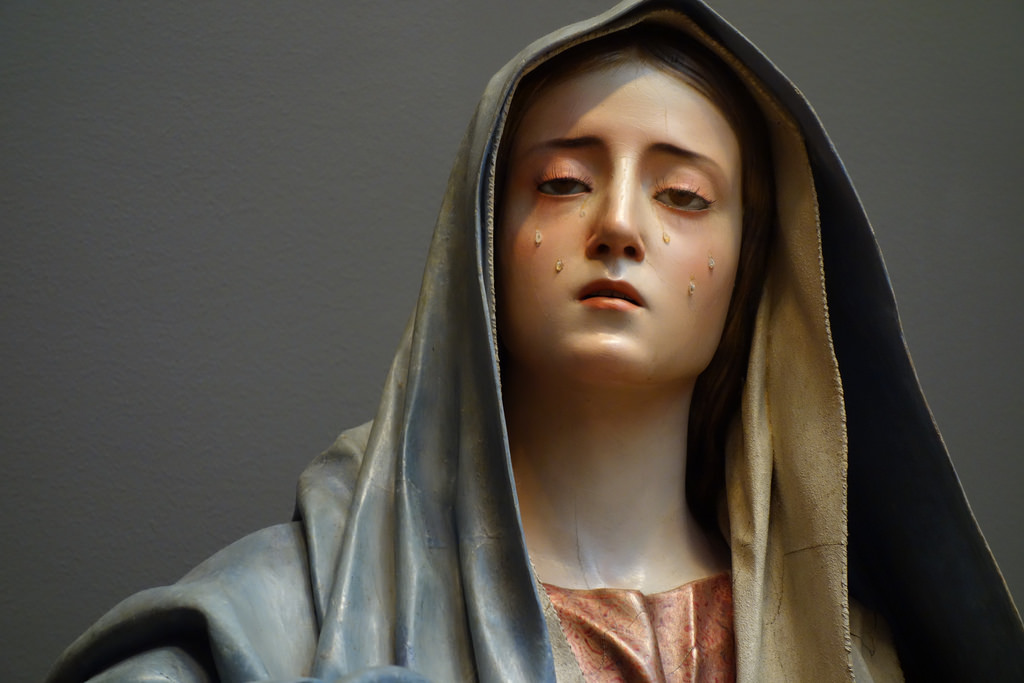Did the Virgin Mary die before being hired?
The assumption of the Blessed Virgin Mary into Heaven at the end of her earthly life is not a complicated doctrine, but a question is a frequent source of debate: did Mary die before being assumed, body and soul, in Heaven?
The traditional answer
From the early Christian traditions surrounding the Assumption, the answer to the question of whether the Blessed Virgin died as all men do has been "yes". The feast of the Assumption was celebrated for the first time in the sixth century in the Christian East, where it was known as the Dormition of the Most Holy Theotokos (the Mother of God). Until today, among Eastern Christians, both Catholics and Orthodox, the traditions surrounding the Dormition are based on a XNUMXth century document entitled "The story of St. John the Theologian of the fallen asleep of the Holy Mother of God". (Dormition means "falling asleep.")
The "falling asleep" of the Holy Mother of God
That document, written in the voice of St. John the Evangelist (to whom Christ, on the cross, had entrusted the care of his mother), tells how the archangel Gabriel came to Mary while praying to the Holy Sepulcher (the tomb where Christ had been deposed Good Friday and from which he rose on Easter Sunday). Gabriel told the Blessed Virgin that her earthly life had come to an end and she decided to return to Bethlehem to meet her death.
All the apostles, captured by the clouds by the Holy Spirit, were transported to Bethlehem to be with Mary in her last days. Together they took her bed (again, with the help of the Holy Spirit) to her home in Jerusalem, where, on the following Sunday, Christ appeared to her and told her not to fear. While Peter sang a hymn,
The face of the Lord's mother shone brighter than the light, and she stood up and blessed each of the apostles with her own hand, and they all gave glory to God; and the Lord stretched out his pristine hands and received his holy and irreproachable soul. And Pietro, and I Giovanni, Paolo and Tommaso, ran and we wrapped his precious feet for the consecration; and the twelve apostles placed his precious and holy body on a sofa and carried it.
The apostles took the sofa and carried Mary's body into the Garden of Gethsemane, where they placed her body in a new tomb:
And behold, a scent of sweet taste emerged from the holy sepulcher of Our Lady Mother of God; and for three days the voices of invisible angels were heard glorifying Christ our God, who was born of her. And at the end of the third day, the voices were no longer heard; and from that moment on everyone knew that his immaculate and precious body had been transferred to heaven.
"Falling asleep of the Holy Mother of God" is the first written document that describes the end of Mary's life and, as we can see, indicates that Mary died before her body was taken to Heaven.
The same tradition, east and west
The first Latin versions of the history of the Assumption, written a couple of centuries later, differ in some details but agree that Mary died and that Christ received her soul; that the apostles buried his body; and that the body of Mary was brought to heaven from the grave.
That none of these documents carry the weight of Scripture does not matter; what matters is that they tell us what Christians, both in the East and in the West, believed had happened to Mary at the end of her life. Unlike the prophet Elijah, who was captured by a fiery chariot and taken to heaven while he was still alive, the Virgin Mary (according to these traditions) died naturally, and therefore her soul reunited with her body to the Assumption. (His body, all documents agree, remained uncorrupted between his death and his Assumption.)
Pius Xii on the death and assumption of Mary
While Eastern Christians have kept these ancient traditions surrounding the Assumption alive, Western Christians have largely lost touch with them. Some, listening to the Assumption described by the term eastern dormitory, mistakenly presume that "falling asleep" means that Mary was taken to Heaven before she could die. But Pope Pius XII, in Munificentissimus Deus, his declaration of 1 November 1950 of the dogma of the Assumption of Mary, quotes ancient liturgical texts from both the East and the West, as well as the writings of the Church Fathers, all indicating that Blessed La Virgo had died before her body was taken to Heaven. Pio echoes this tradition with his own words:
this feast not only demonstrates that the corpse of the Blessed Virgin Mary remained uncorrupted, but that she achieved a triumph from death, her heavenly glorification following the example of her only-begotten Son, Jesus Christ. . .
Mary's death is not a matter of faith
However, the dogma, as Pius XII called it, leaves open the question of whether the Virgin Mary died. What Catholics have to believe is
that the Immaculate Mother of God, the ever Virgin Mary, having completed the course of her earthly life, was assumed body and soul in heavenly glory.
"[H] having completed the course of his earthly life" is ambiguous; allows the possibility that Mary did not die before her Assumption. In other words, while tradition has always indicated that Mary is dead, Catholics are not required, at least by the definition of the dogma, to believe it.
